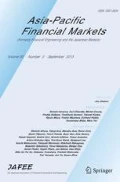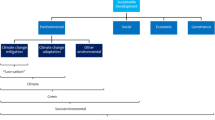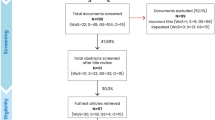Abstract
The financial system stability is an important issue to be evaluated and controlled in order to withstand the threat of a crisis that may occur in Indonesia. Bank Indonesia has constructed Indeks Stabilitas Sistem Keuangan (ISSK) to respond the issue, but ISSK is not considering global economy effect into the index construction. While there is another measurement called Aggregate Financial Stability Index (AFSI) that capable to consider both global economy and ISSK dimensions. However, each dimension is considered to have the same contribution to AFSI, despite the contributions are different in fact. Therefore, this research aims to construct AFSI using Change Point Analysis (CPA) on weighting stage for showing that each dimension has different contribution. The constructed AFSI was good and was able to capture crisis period that occurred in Indonesia during the research period. In addition, AFSI using CPA also utilized for knowing source of instability in each period using a heatmap. In general, instability that occurred in Indonesia dominantly caused by the vulnerability of financial system. This research also found that each period of crisis always follows by pressure from global economic condition. AFSI using CPA is expected to be an alternative or support measure of ISSK in determining related policies.

Source: Badan Pusat Statistik

Source: Parametric Statistical Change Point Analysis (2012)

Source: Parametric Statistical Change Point Analysis (2012)

Source: Parametric Statistical Change Point Analysis (2012)







Source: Ministry of Energy and Mineral Resources Republic of Indonesia


Similar content being viewed by others
References
Albulescu, C. T., & Goyeau, D. (2010). Assessing and forecasting romanian financial system’s stability using an aggregate index. Romanian Journal of Economic Literature, 85, 90.
Albulescu, C. T. (2010). Forecasting the Romanian financial system stability using a stochastic simulation model. Romanian Journal of Economic Forecasting., 13(1), 81–98.
Bianconi, M., Yoshino, J. A., & De Sousa, M. O. M. (2013). BRIC and the US financial crisis: An empirical investigation of stock and bond markets. Emerging Markets Review, 14, 76–109.
Cheang, N., & Choy, I. (2011). Aggregate financial stability index for an early warning system. Macao Monetary Research Bulletin, 21(1), 27–51.
Chen, J., & Gupta, K. A. (2012). Parametric statistical change point analysis (2nd ed.). Basel: Birkhäuser.
Dornbusch, R., & Reynoso, A. (1989). Financial factors in economic development.
Gunadi, I. (2013). Penggunaan Indeks Stabilitas Sistem Keuangan Dalam Pelaksanaan Surveilans Makroprudensial. Working Paper Bank Indonesia.
Illing, M., & Liu, Y. (2003). An index of financial stress for Canada. Working Paper National Bank of Canada 14.
Karanovic, G., & Karanovic, B. (2015). Developing an aggregate index for measuring financial stability in the Balkans. Procedia Economics and Finance, 33, 3–17.
Louzis, D. P., & Vouldis, A. T. (2013). A financial systemic stress index for Greece.
Mankiw, N. G. (2006). Prinsip of economic. Pengantar Ekonomi makro. Jakarta: Salemba Empat.
Morris, V. C. (2010). Measuring and forecasting financial stability: The composition of an aggregate financial stability index for Jamaica. Financial Stability Departement Bank of Jamaica.
OECD. & JRC. (2008). Handbook on constructing composite indicators methodology and user guide. Paris: OECDpublishing.
Raschka, S. (2013). Heat maps in R how-to. Birmingham: Packt Publishing.
Scott, A. J., & Knott, M. (1974). A cluster analysis method for grouping means in the analysis of variance. Biometrics, 30(3), 507–512.
Schinasi, G. J. (2004). Defining financial stability. Working Paper International Monetary Fund 187.
Singh, T. R. (2010). An ordered probit model of an early warning system for predicting financial crisis in India. IFC Bulletin, 25, 185.
Taylor, W. A. (2000). Change-point analysis: A powerful new tool for detecting changes. WEB: http://www.variation.com/cpa/tech/changepoint.html.
Worsley, K. J. (1979). On the likelihood ratio test for a shift location of normal populations. Journal of the American Statistical Association, 74, 365–367.
Author information
Authors and Affiliations
Corresponding author
Additional information
Publisher's Note
Springer Nature remains neutral with regard to jurisdictional claims in published maps and institutional affiliations.
Rights and permissions
About this article
Cite this article
Gustiana, A., Nasrudin Evaluating Financial System Stability Using Heatmap from Aggregate Financial Stability Index with Change Point Analysis Approach. Asia-Pac Financ Markets 28, 367–396 (2021). https://doi.org/10.1007/s10690-020-09326-0
Accepted:
Published:
Issue Date:
DOI: https://doi.org/10.1007/s10690-020-09326-0




